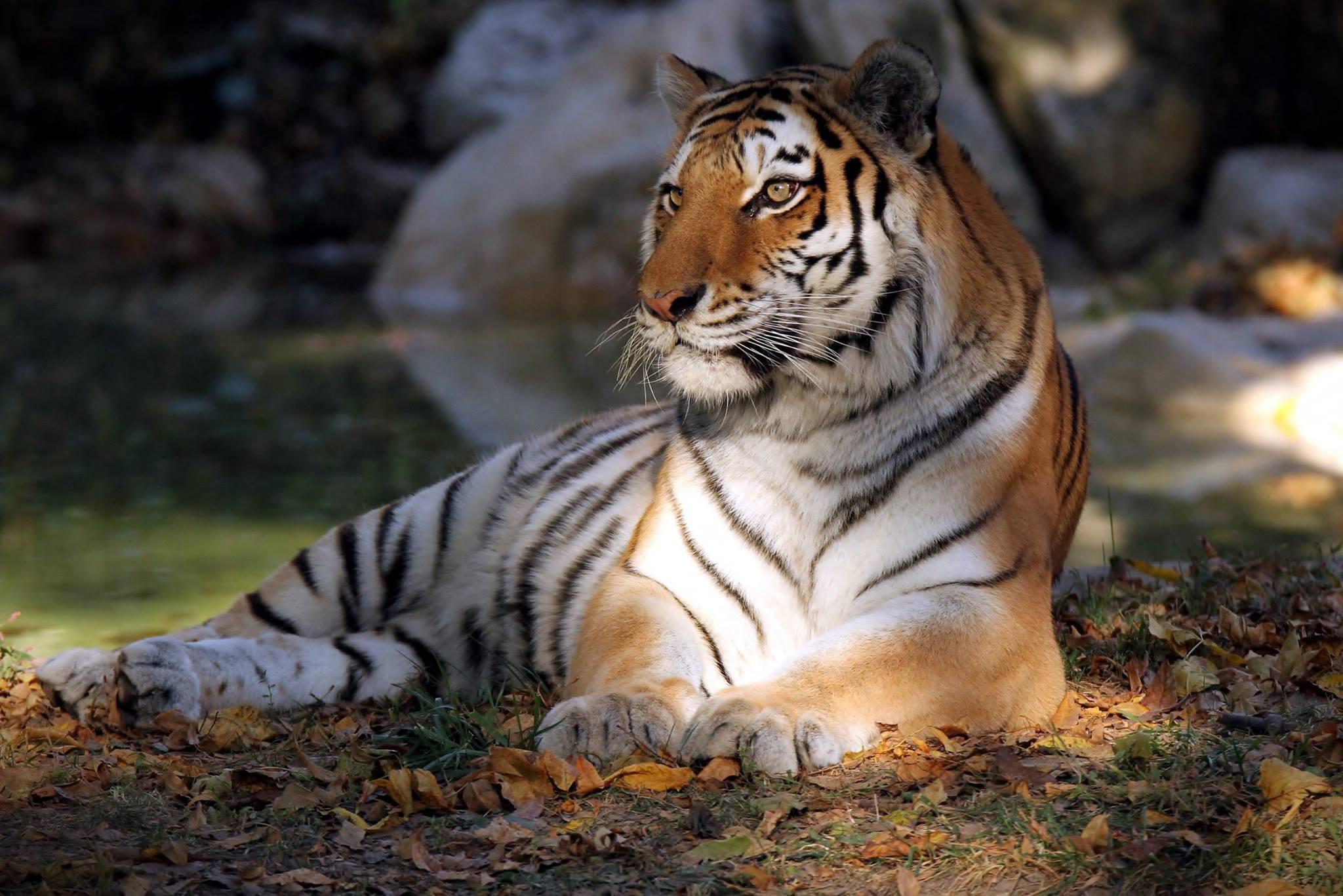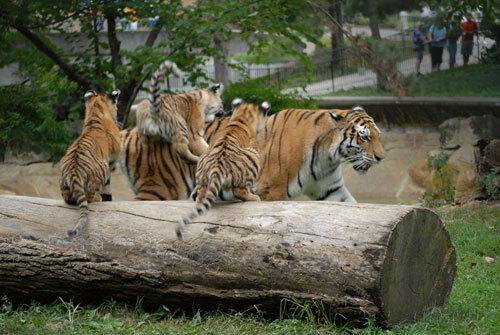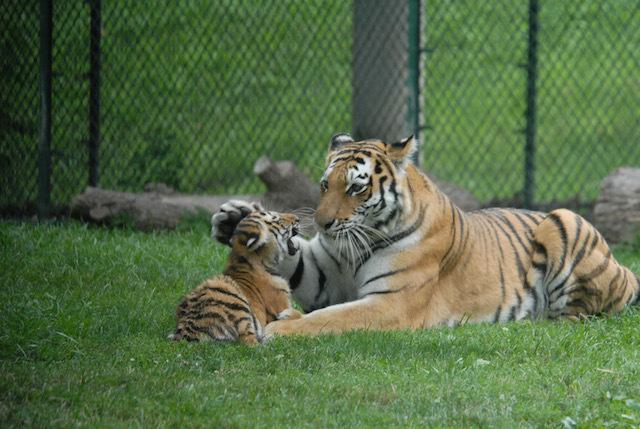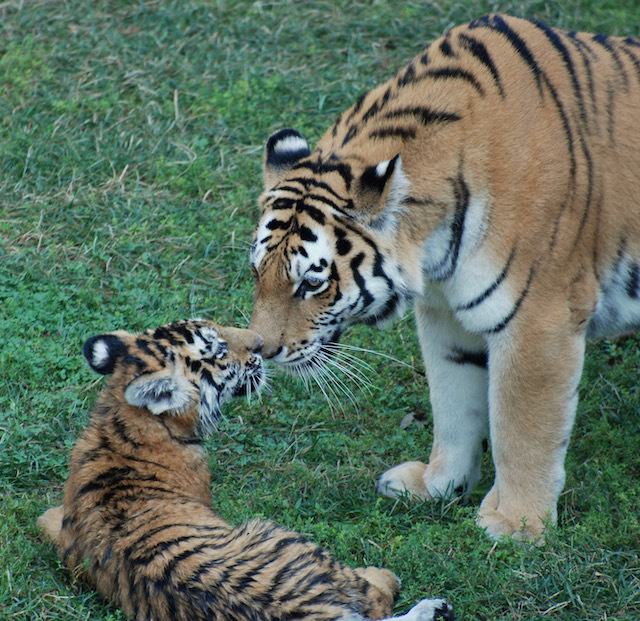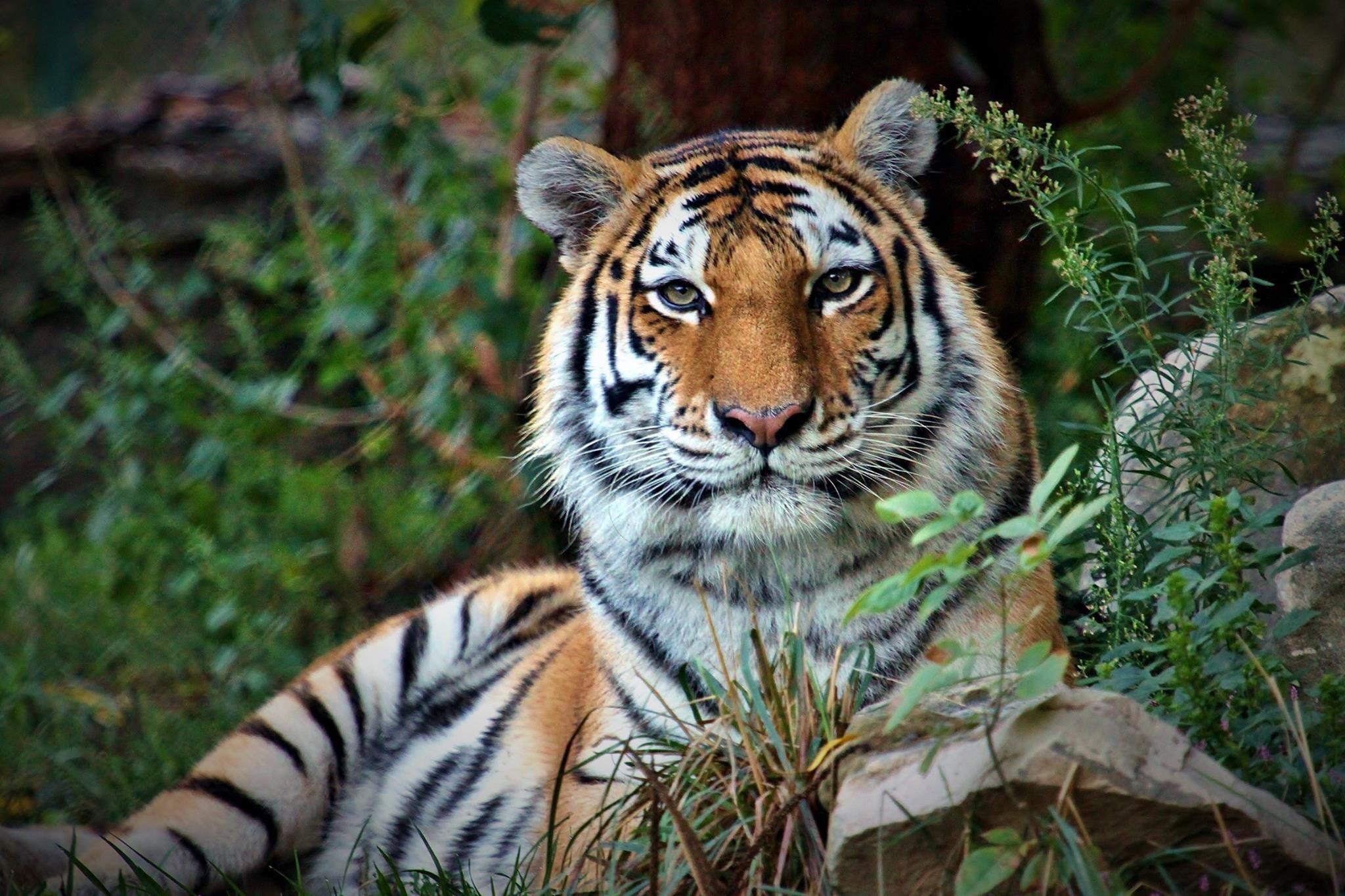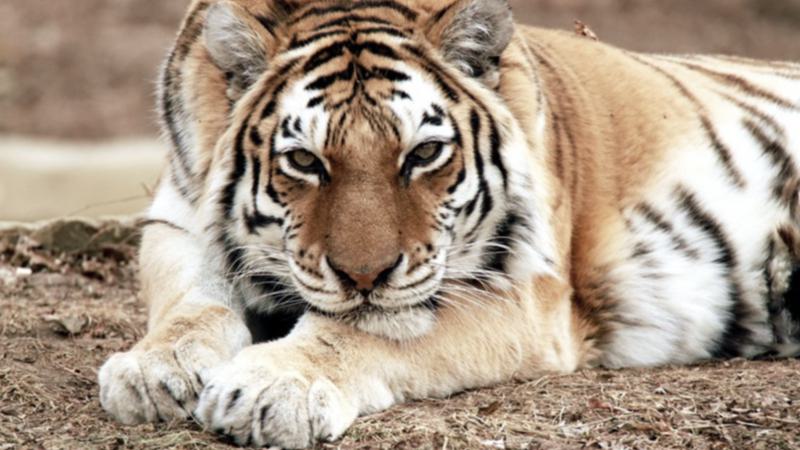It is with a heavy heart that we share the sad news about our beloved Amur tiger, Kalista, who passed away at her Big Cat Country habitat on March 27, 2021, at 19 years and 10 months old. She had been under treatment for age-related degenerate joint disease for several years. When medical treatment was not sufficient to keep her comfortable and pain free, our Animal Care and Veterinary teams jointly decided that euthanasia was the most humane option.
Before her death, Kalista, at 19 years and 10 months old, was the oldest living female Amur tiger in the Association of Zoos and Aquariums (AZA) North American Species Survival Plan Program (SSP). Our other Amur tiger, Waldemere (Waldo), is currently the oldest living male at age 17 years and 10 months old. The average life span for Amur tigers is 14.3 years for females and 16 years for males. The Saint Louis Zoo is dedicated to providing the best possible care for every animal at the Zoo. The animal care teams are committed to ensuring that the animals have enriching and comforting lives well into their golden years.
A Great Tigress
In 2008, at age 7, Kalista gave birth to and raised her first litter — a rare, large litter of five cubs! A normal litter size for this species is two or three. Kalista was an amazing mother tigress and a very special cat, according to the animal care team. "Kalista was a very social and energetic tiger. She enjoyed interacting and training with the keepers and greeted everyone with a 'chuff,' which is a tiger-specific vocalization showing affection. We will all miss her," said Steve Bircher, Kevin Beckmann Curator of Carnivores, Saint Louis Zoo.
Conserving a Species
Kalista was born at the Philadelphia Zoo in 2001 and moved to the Saint Louis Zoo in 2003. The father of the five cubs, Khuntami, was born in the wilds of eastern Russia and came to St. Louis from the Omaha Zoo in 2006. He was considered one of the most genetically valuable tigers in North America. The pairing and cubs' birth was carefully planned by the AZA Tiger Species Survival Plan, a program to manage a genetically healthy population of tigers in North American zoos. Khuntami and all five of their offspring moved to other zoos on conservation breeding recommendations by the SSP.
Waldemere came to the Saint Louis Zoo at age 8 from the Denver Zoo in 2011 on a conservation breeding recommendation by the SSP. Kalista gave birth to a female cub in 2012 who needed to be hand-reared by the animal care team. The young cub soon moved to the Minnesota Zoological Garden to be raised with another hand-reared cub.
"Kalista's offspring are very important to the survival of the Amur tiger species," said Bircher.
Critically Endangered Cats
The Amur tiger's habitat is eastern Russia, northeastern China and northern regions of North Korea. There were once eight subspecies of tigers; today, three are extinct and five others are critically endangered, including the Amur tiger. Once there were over 100,000 tigers roaming the world; now there are fewer than 3,000. It's estimated only 350 to 450 Amur tigers exist in the wild today.
Besides being reduced in number, their range has been reduced. Once, they lived throughout much of Siberia and surrounding areas, and for this reason they were often called Siberian tigers. Today, with their reduced range, they're no longer found in Siberia or called by that name. (Their "new" name comes from the Amur River, which flows through the middle of their current, reduced range in Russia.) Loss of habitat due to logging activities, human encroachment, and poaching are the main threats to their survival in the wild.
Helping Tigers
Since 2012 the Saint Louis Zoo has been collaborating with other AZA Zoos in the Tiger Conservation Campaign, which is a program supporting anti-poaching and monitoring efforts for the Amur tiger in eastern Russia. And in our daily lives, each of us can avoid buying products made from tiger parts, and we can look for wood products that are harvested without destroying tigers' habitat. The Forest Stewardship Council has advice and several websites list forest-friendly products.
